Varicose veins (varicose veins) is a pathology of blood vessels, manifested by their deformation and disruption of blood flow. Observing the appearance of spider veins, pain and heaviness in the legs, it is worth starting treatment for varicose veins immediately, especially if the initial manifestations of the disease can be treated with minimally invasive or generally folk remedies.

The main symptoms of varicose veins in the legs
The famous "spider web" on the legs is nothing more than the initial stage of varicose veins. In addition, the main symptoms of varicose veins include:
- persistent swelling of the legs in the thigh or lower leg;
- weight on the legs;
- skin discoloration: appearance of red spots, darkening;
- changes the shape and size of blood vessels;
- thickening of the skin of the lower leg;
- severe pain in calves, aggravated by walking, feeling of heat and burning in the legs;
- vascular pain during pressure;
- formation of trophic ulcers;
- night leg cramps.
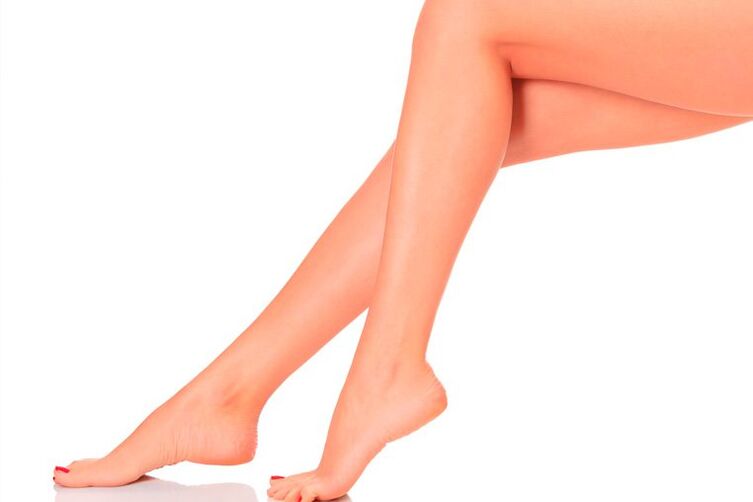
With varicose veins in the legs, therapy should begin as soon as possible.
In such places, the speed of blood flow slows down, which contributes to the formation of thrombosis.
With this disease, the venous vessels lose their elasticity, dilate in some places, bend, and form nodules.
How to treat varicose veins in the legs?
Modern medicine has several ways to treat this disease. The doctor should decide on the treatment regimen, taking into account the existing symptoms, accompanying diseases and the characteristics of the patient's body. As a result, such modern methods can be involved:
- Conservative treatment is the use of certain drugs.
- Minimally invasive methods. Whenever possible, doctors try to use them to treat varicose veins in the legs.
- Radical therapy. Perform venectomy and phlebectomy for varicose veins.
In some cases of a mild stage of varicose veins in the legs, folk remedies with the consent of the doctor can be used as adjuvant methods to help eliminate varicose veins.
Wearing compression garments helps varicose veins heal early, as well as supporting the veins in the postoperative period. The effectiveness of compression garments is related to the effect of compression and tissue compression causing varicose veins. There are product models for the treatment of varicose veins in men and pregnant women.
Modern treatment methods
Drug treatment: creams, ointments and gels
Varicose veins cause damage to blood vessels, which leads to blood stasis. Therefore, the following groups of drugs will be effective in the first stage of the disease:
- Non-steroidal tablets or gels to prevent inflammation. They are used in the treatment of thrombosis and thrombophlebitis. Treatment of varicose veins with these drugs should be carried out only under the supervision of a physician.
- It is based on antihistamine, anti-inflammatory hormones for varicose veins. They also reduce tissue swelling.
- Blood-thinning drugs that prevent venous blood stasis and blood clotting, thin the blood and improve circulation.
These medications are actively used in home therapy for varicose veins, but they should be used strictly as directed by your doctor. Ointments and gels are usually applied directly to the vascular area twice a day.
Minimally invasive procedures
Minimally invasive methods of treating varicose veins do not require surgery, hospitalization and long-term follow-up rehabilitation. Non-surgical intervention is performed in the operating room under local anesthesia. These methods of treating varicose veins in the legs are less traumatic.
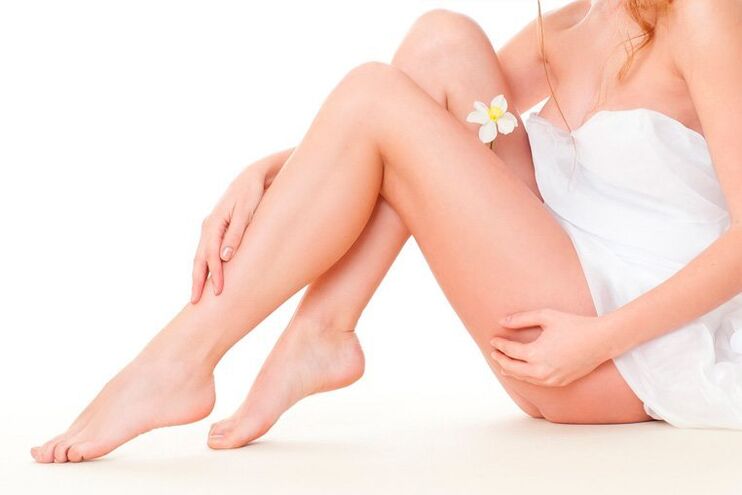
The patient can go home that day.
In 95% of varicose veins, doctors use non-surgical interventions, and only 5% of patients undergo phlebectomy.
Minimally invasive procedures include:
- radiofrequency ablation;
- sclerotherapy;
- laser ablation;
- microflebectomy.
Sclerotherapy
Sclerotherapy involves injecting the active substance sclerosant into a deformed vessel. It closes the damaged area of the artery and the blood moves along the bed to be restored. Over time, the isolated part of the vessel resolves on its own.
Sclerotherapy is performed under constant ultrasound supervision. Modern technology has further improved the method of sclerotherapy. More and more people are now using a more effective method to treat varicose veins - foam sclerotherapy. It is performed when the diameter of the vessels does not exceed 10 mm, such an intervention practically does not complicate the postoperative period.
To enhance the positive effect after sclerotherapy, the patient is advised to wear compression garments for a month.
Radiofrequency ablation
Radiofrequency ablation is one of the least traumatic methods and can also effectively remove varicose veins in the legs. The procedure is possible with any diameter of blood vessels. Ablation is performed under local anesthesia, under constant ultrasound supervision.
A radiofrequency catheter is inserted into the tissues around the vein through a small puncture in the vein. An anesthetic is then injected to create a "water bed" around the damaged vessel, protecting the surrounding tissues from the effects of radio waves. Long-term rehabilitation is not required after radiofrequency therapy, the patient can live an active life for 2 weeks after the procedure. Despite the price, this method has the best reviews in the forums.
Contraindications to radiofrequency ablation are thrombophlebitis and trophic skin changes.
Laser ablation
Laser ablation is performed in an outpatient setting for 30 minutes to 2 hours under local anesthesia. Upon completion, the patient can immediately go home independently of the clinic. The method involves laser burning the walls of blood vessels using a special light guide. As a result, there is blockage of the affected area of the vessel.
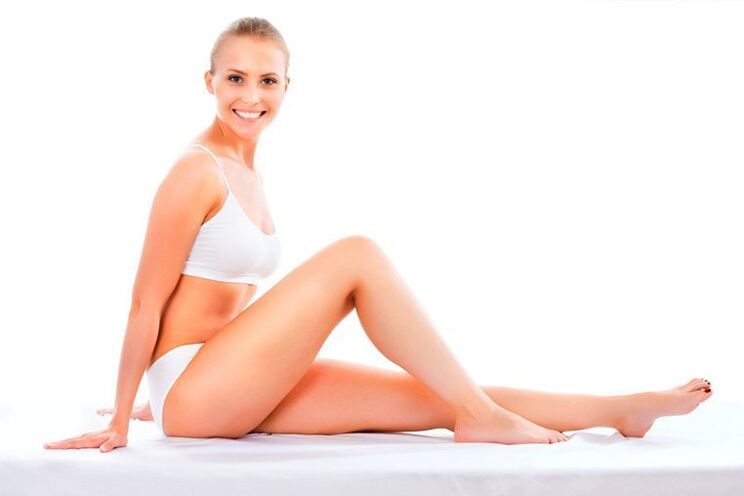
Over time, the laser-treated area melts.
Several types of optical fiber are used for laser ablation:
- tip - for vessels not exceeding 1 cm in diameter;
- radial - for vessels of any diameter, coverage 360 degrees.
After the laser therapy procedure, the patient is advised to wear compression stockings for prophylactic purposes. The type of linen and the duration of use is determined by a phlebologist, the cost of such aids has recently been lower.
Microflebectomy
During the microflebectomy procedure, the surgeon removes the affected area of the vessel using special hooks. These hooks are inserted into the vein with a micro incision of up to 1 mm. The procedure is performed under local anesthesia.
The duration of rehabilitation after treatment is 3-5 days, after which the patient can go to work. During the procedure, bruises appear at the site of exposure, which resolve on their own after 3-4 weeks. It is recommended to wear compression garments for the first 2 weeks after microflebectomy.
The advantages of microflebectomy include the ability to apply the technique to vessels of any diameter and completely remove the affected area of the vein.
Phlebectomy
In case of severe neglect of varicose veins in the legs and non-surgical treatment regimens do not give positive results, the patient is prescribed a operation to remove the damaged veins - phlebectomy. Only surgery will help treat varicose veins in advanced cases.
Phlebectomy is performed in a hospital under spinal or general anesthesia for no more than 2 hours. After the operation, the patient is observed in the treatment center for 1-2 days.
Tips for surgery:
- acute impairment of blood flow;
- wide varicose veins;
- Severe complications of varicose veins - thrombophlebitis, trophic ulcers.
The risk of complications during surgery is minimal, but there are contraindications to phlebectomy:
- inflammatory processes in the skin;
- internal deep vein thrombosis;
- diseases of the cardiovascular system;
- hypertension;
- infectious diseases;
- pregnancy.
For phlebectomy, a special probe is inserted into a vein through a small incision in the skin. The dilated part of the vessel is removed mechanically and an incision is made.
In the postoperative period, the patient is prescribed venotonics and drugs to reduce blood viscosity, it is recommended to wear compression underwear for 2 months, exercise in a special gymnastics complex and walk in the fresh air.
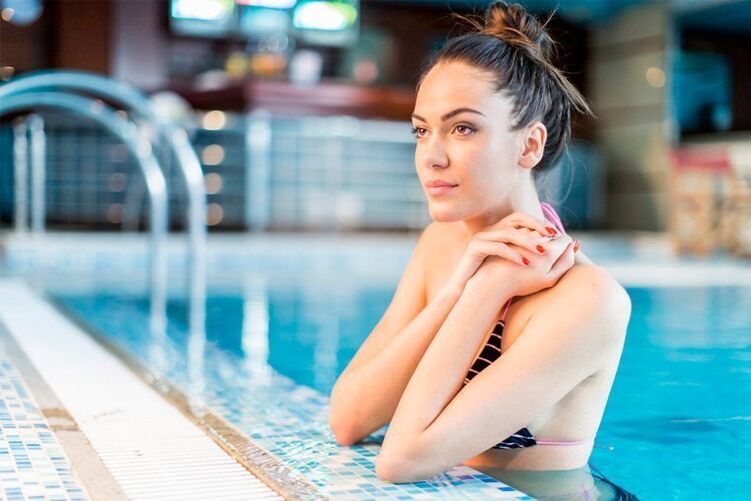
Cycling and swimming are also helpful.
Treatment of varicose veins in the legs with folk remedies at home
Treatment of varicose veins in the legs with folk remedies can be effective in the early stages of the disease, if you consult with your doctor and take a comprehensive approach to the problem. You need to take a number of measures to eliminate the disease:
- Avoid the habit of sitting cross-legged.
- Walk more in comfortable shoes.
- Include fiber in your diet, avoid fried, fatty and spicy foods, and take extra vitamins and minerals.
- Use folk remedies (decoctions, tinctures, compresses, rubs) to get rid of varicose veins in the legs.
Apple cider vinegar for varicose veins in the legs
Apple cider vinegar helps to relieve swelling, pain and heaviness in the legs with varicose veins. The product contains more than 20 minerals and trace elements that are beneficial to the body, as well as vitamins A, C and B. Apple cider vinegar strengthens the walls of blood vessels and helps eliminate edema, tones the skin.
Ways to use apple cider vinegar to treat varicose veins:
- Compresses. Soak a bandage in clean vinegar, apply to the varicose area of the skin, wrap in cellophane, moisten with a towel. Place your feet horizontally 50 cm above your body, for example, on the arm of the sofa. Keep the compress for 30 minutes to 1 hour.
- friction. After regular water procedures, apply apple cider vinegar to the painful varicose veins of the lower extremities, do not rinse the product until the next shower.
- Warming up. The recipe is very simple: dilute 150 g of apple cider vinegar in 2 liters of warm water. Slowly pour the prepared solution from a bucket into the swollen veins and place your feet in a basin. Drain and repeat the procedure for 5 minutes. Do not dry your feet after pouring, they should dry naturally.
Clay lotions and compresses
Blue, green or white clay is useful for the treatment of varicose veins, it can be bought at the pharmacy. Soak the clay in cold water and brush the varicose areas of the feet. The thickness of the clay layer should be at least 1 cm. Cover with polyethylene, no insulation required. Keep such a cold dressing 1-1, 5 hours, then take a cool shower.
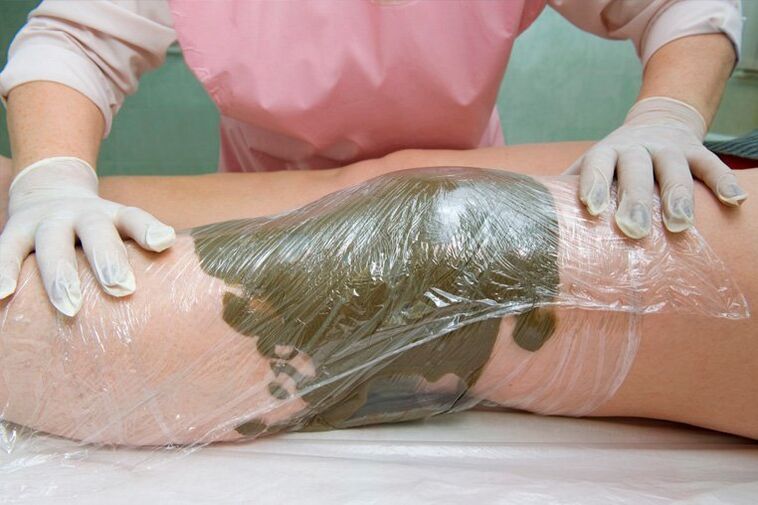
Clay compresses should be applied twice a week for 12 procedures.
In the treatment of varicose veins in the legs, a cold bandage is as useful as a warm bandage. When the temperature drops, the arteries constrict, metabolism speeds up, and lymph is released, which removes toxins and toxins from the body. Clay bandage effectively eliminates swelling and helps relieve foot fatigue.
Acacia flower tincture
Tincture of white acacia flowers helps treat varicose veins. Used in the form of compresses, rubs, lotions.
Tincture has the ability to dissolve swollen venous nodes.
To prepare the tincture pour 100 g. White acacia flowers with half a liter of vodka, leave for three weeks in a dark place. Filter the daily infusion and apply to the skin where venous dilatation is visible. The more often you do this, the faster the normal blood circulation in your feet will be restored. First, the vascular network will thin and disappear, and over time, the deep veins will disappear.













































